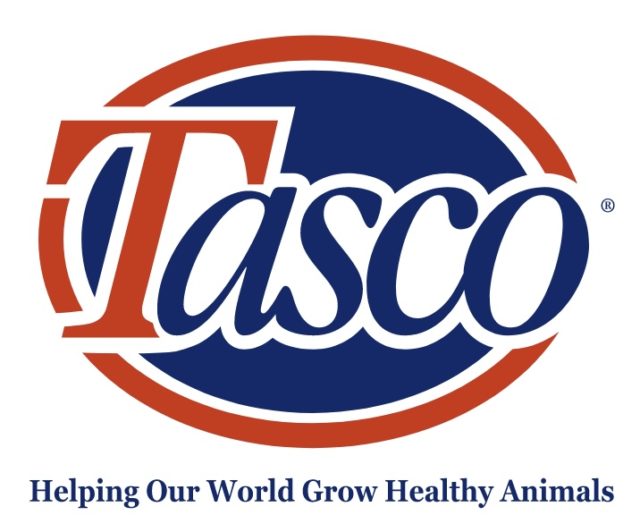At two to three weeks postpartum, the cow’s uterine lining is sloughed, under repair and, in most cases, contaminated with bacteria. This results in an inflammatory response which is helpful for a normal uterine involution. However, the pathogenic bacteria overcome the innate immune defenses in 5% to 30% of cows in the herd, causing them to experience reproductive tract inflammatory diseases (RTID): metritis, purulent vaginal discharge or endometritis. Clinical endometritis was reported in 16.9% of 1,865 cows in a study in Canada.
Immune responses to pathogens are energetically expensive, and the depletion of important cellular nutrients like glucose or glutamine impairs the inflammatory responses by the endometrial tissues. High-yielding cows are the most at risk for developing RTID. To promote the sustainable intensification of the current dairy industry, an understanding of the risk factors and the key management and nutrition strategies is vital to prevent the high frequency of this uterine pathology.
Metabolic challenges and RTID
-
Ketosis. In early lactation, low intakes and weight loss may also delay normal reproductive tract uterine involution. Conditions of negative energy balance during post-calving, ketosis or subclinical ketosis contribute to the depression of the immune function and can lead to RTID. The mobilization of fat produces pro-inflammatory mediators (TNF alpha and IL-6) that block the intracellular signaling of insulin (insulin resistance) and results in higher levels of non-esterified fatty acids (NEFA) and the onset of ketosis and possible fatty liver syndrome.
Overconditioned cows are more prone to lose weight, show symptoms of ketosis or subclinical conditions. However, ideally conditioned cows or thin cows may also be challenged under situations of reduced intake, for example: inadequate feeding space, social stress or high temperatures. It is clear that energy status plays a key role in the early immune defense against uterine infections postpartum. Research in vivo has shown that animals can use more than 1 kilogram (2.2 pounds) of body glucose in the first 12 hours after a challenge with a bacterial component called LPS (membrane part of gram-negative bacteria), which induces a strong response from the immune system.
Clinical and subclinical ketosis have a major impact on individual cow performance and whole-herd productivity. The average calving interval was shown to be extended from 108 to 124 days for cows with ketosis in the first or second week postpartum and extended to 130 days for cows with subclinical ketosis in both weeks in a study. Another research work using beta-hydroxybutyrate (BHB) as a marker of subclinical and clinical ketosis found cows with levels of serum (BHB) higher than 1.8 mmol per liter in week one had 300 kilograms (661 pounds) lower projected milk production for the whole lactation.
-
Hypocalcemia. During late lactation, the ability of the tissues to respond to a coordinated hormonal response has diminished. As a result, at the start of their next lactation, cows are not ready for the rapidly increased demands for calcium and become severely hypocalcemic. Therefore, all cows experience a negative calcium balance in the days immediately following calving.
Low blood calcium (hypocalcemia) will affect muscle contraction, immune cell activity and produce milk fever, displaced abomasum, mastitis and metritis. Associated decreased reproductive performance is also common, even when cows show no visual symptoms of hypocalcemia.
There are research facts that show cows with subclinical hypocalcemia (SCH) had a significant decrease in immune response. The number and activity of immune cells (neutrophils) was lower and less effective. The phagocytosis and number of bacteria phagocytosed per neutrophil were lower for cows with SCH compared with normal-calcium-level cows. There was also a significant reduction in the percentage of neutrophils with oxidative burst activity, which is a way they combat bacterial infection (the release of reactive oxygen species like superoxide radicals and hydrogen peroxide).
In another study, the risk of developing metritis increased a little more than threefold, whereas the risk for developing puerperal metritis within the first 12 days in milk was elevenfold for SCH compared with normal-calcium-level cows. As a consequence, SCH cows had a reduced rate of pregnancy and increased days open by 15 days.
The nutritional defense
-
Minerals and vitamins: During disease situations and inflammatory responses, there is a major shift in the essential trace minerals distribution and utilization favouring the traumatized tissues. Copper, manganese, zinc, selenium, and vitamin A and E have been found to be essential for the optimal activity of cell-mediated defense and antioxidant protection. As part of metalloproteins and co-factors, trace minerals participate in the activation of enzymes and stabilization of secondary molecules, which are components of hormones. Therefore, these minerals and vitamins are involved in normal reproductive behavior, ovarian cycle, embryonic development and survival. Zinc is a key in the regeneration and integrity of the epithelial cells and essential in postpartum recovery.
-
Low DCAD: To maintain the calcium balance that will support the high levels of milk production, the parathyroid hormone (PTH) needs to activate the body to increase the absorption of calcium in the intestine to release calcium stored in the bones (osteoclasis) and decrease calcium excretion at the kidney level. Feeding a peripartum ration with low or negative dietary cation-anion difference (DCAD) implies feeding a diet with a low or negative relation between the following ions [(sodium + potassium) – (chlorine + sulphur)].
A lower or a negative DCAD results in an increased sensitivity of the tissues to PTH and a more efficient response by the cow to a situation of low blood calcium. Because of a high content of potassium in our soils, forages have to be selected carefully and the ration adequately balanced for these factors in dry cow diets. Anion supplements to reduce dietary DCAD may need to be used based on the farm’s inventory of feeds.
Concluding remarks
-
Intake. From a nutritional standpoint, the first key management factor to support the immune system is to ensure the fresh cow is consuming feed. Intake is the first compromising factor diminishing energy intakes. Propionate from the rumen contributes 50% to 60% to net glucose release by the liver during the transition period. Managing social stress, overcrowding, water consumption, locomotion problems and heat stress is very important to improve dry matter intakes.
-
Dry cow program. A custom-made dry cow program is recommended. Each farm has a particular setup and available feeds. Therefore, a well-balanced ration based on the specific farm conditions is required. It is recommended to supply sources of chelated trace minerals (zinc, manganese, copper and selenium) because they have higher absorption rates and documented improved transition period results and milk production.
-
Fortification. Fortified vitamin A and E programs and low-DCAD diets have been demonstrated to reduce health events during transition. Furthermore, substantial evidence shows bypass choline supplementation reduces fatty liver, promotes liver function and liver synthesis of glucose to support lactation and more milk production.
-
Nutrition advice. Discuss with your ruminant technical representative about dry cow feeding programs, custom-made premixes or supplements, management and fortification strategies.


-
Sylvia Borucki
- Ruminant Nutritionist
- New-Life Mills
- Email Sylvia Borucki






